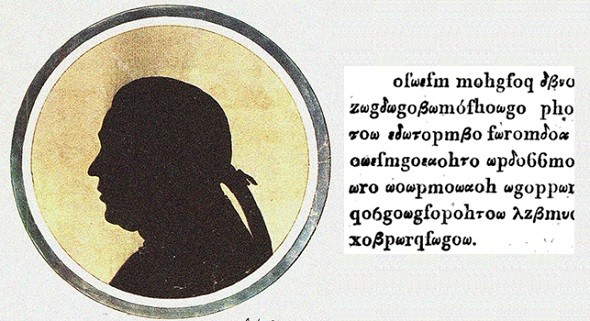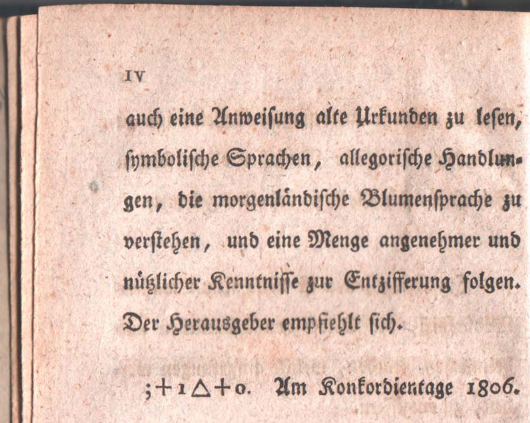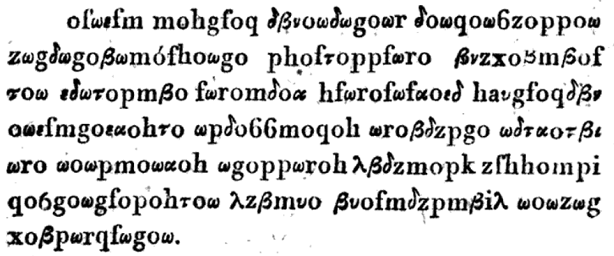A crypto book published in 1808 contains an exercise cryptogram. The solution is not given. Can you find it?
Earlier this year, I published a blog post about the book Die Kunst, geheime Schriften zu entziffern (“The art of decryption secret writing”). The author of this German crypto book from 1808 does not reveal his real name, instead, he calls himself “;+ɪ∆+o”. It was long unclear what this meant and if this character sequence could be decrypted to the author’s name. Tobias Schrödel, who had discovered this mystery, published it on the crypto puzzle platform Mystery Twister C3, but nobody handed in a plausible solution.
Beigel or Hensel?
As described in the afore-mentioned blog post, the situation changed, when blog reader Julia Bernotat from Hochstetten, Germany, suggested the Saxonian physician Georg Wilhelm Sigismund Beigel (1753-1837) as book author. In fact, many parts of Beigel’s biography fit quite well with the facts we know about the anonymous crypto writer. In addition, the surname BEIGEL is consistent with a letter substitution resulting in “;+ɪ∆+o”, as the second and the fifth letter are equal.
After I had published Julia’s hypothesis, a long discussion among my blog readers startet. Thomas Ernst, assistant professor of modern and classical languages at the Saint Vincent College in Pennsylvania, proposed a different author: Johann Daniel Hensel (1757-1839). As can be easily seen, the surname HENSEL fits with the ciphertext “;+ɪ∆+o”, too.
Norbert Biermann, a music professor from Berlin, and Thomas Ernst pointed out that Die Kunst, geheime Schriften zu entziffern is an act of plagiarism, as it is almost identical with a crypto book written by Carl Arnold Kortum (1745-1824) in 1797.
All in all, almost 100 comments were published in the comment section of my blog article. It makes me proud that this publication of mine stimulated such a sophisticated discussion.
An exercise cryptogram
The book Die Kunst, geheime Schriften zu entziffern contains a number of exercise cryptograms. The solution of some of them is given in Julia Bernotat’s paper. Here’s another one (thanks to Norbert Biermann for the hint):
Norbert Biermann has provided me the following transcription (it is based on Kortum’s original, as the copy from 1808 contains a few mistakes):
ofwεfmmohgfoqδβνowδwgowrδowgowbzoppow
zwgδwgoβwmofhowgophofτoppfωroβνzxoβmβofτow
εδwτopmβofωromδoαhfωrofwfαoεδhowgfoqδβνow
εfmgoεαohτowpδbbmoqohωroβδzpgowδταoτβiωro
wowpmowαohwgoppωrohλβδzmopKzfhhompi
qoβgowgfopohτowfwλzβmνoβνofmδzpmβiλ
wowzwgxoβpωrqfwgow.
Can somebody solve this cryptogram?
Follow @KlausSchmeh
Further reading: Who can break these encrypted telegrams from 1876?





Kommentare (13)